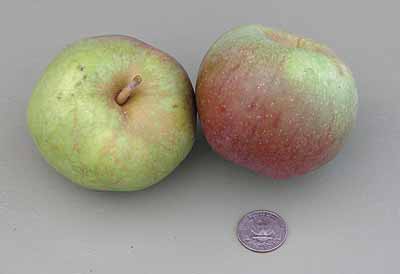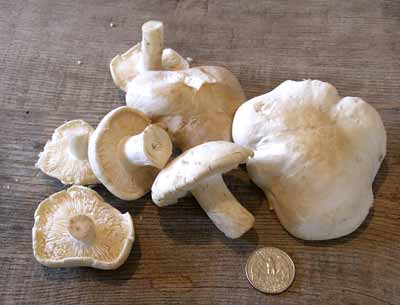
A name for Baldwin. A variety of mottled, medium to large, yellow eating apple streaked with dark red and crimson which was found by Mr John Ball on a farm in Lowell, Wilmington in Massachusetts some time around 1740. It was named Pecker or Woodpecker and then renamed in the early 1800s. It is a crisp apple with a slightly tart flavour and having a tough skin and yellowish-white flesh. It is a late-season apple, which is picked from mid-October in South-East England, is stored and is at its best from December to April. In the United States it is picked in September in warm regions and until November in colder. Baldwin was an extremely popular apple until several million trees were killed off in the severe winter of 1918.
The Sevruga or stellate surgeon is the smallest but most prolific of the sturgeons.
Stem ginger is preserved ginger. This is achieved by peeling and scrubbing as fresh roots as you can obtain and soaking them in cold water overnight. Bring them to the boil, discard the water and repeat until the roots have softened somewhat. Make a sugar syrup and add the roots. Heat the water till it comes to the boil and then steep overnight. Put into preserving jars covered with the syrup once they have cooled down. These provide an amazing warm, deep flavour added to home-made vanilla ice-cream, pork dishes, all sorts of surprises, even roast lamb.
Beef cut from the shank or forelegs, equivalent to shin. Use for stocks and well-flavoured stews, but needs cooking for a long time.

The St George's mushroom is a small, domed mushroom which is white to a slightly dingy cream with white flesh. Firm and good to eat. Found, often in rings, in spring and autumn (US: fall) though it is actually among the earliest of mushrooms to appear, around St George's Day on 23rd April though it is actually among the earliest of mushrooms to appear, around St George's Day on 23rd April. (If gathering mushrooms you must be absolutely certain what you have before you eat them as many are very poisonous.)